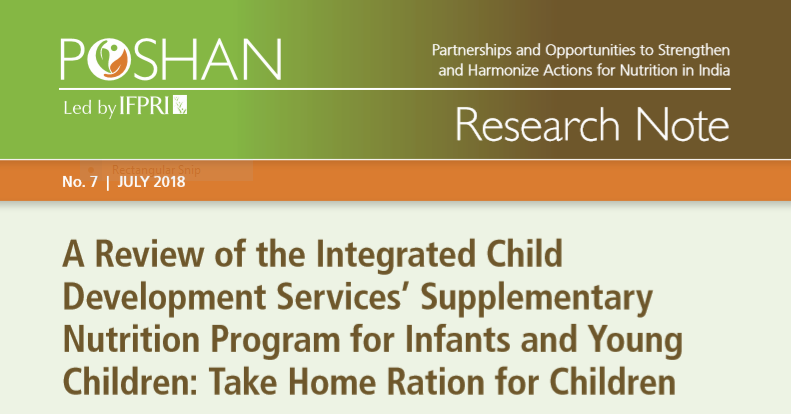
Click here to download the PDF
The first 1000 days of a child’s life are a critical window of opportunity for preventing undernutrition and its long-term consequences. Growth faltering occurs within this period (from 6─24 months of age), when a child starts to transition from breastfeeding to complementary feeding. Children in this age group have high nutrient requirements and therefore need high nutrient-dense complementary foods (Dewey et al. 2013).
In low-resource settings, a child’s nutrient requirements are rarely satisfied where a majority of the complementary foods are prepared using cereals and legumes, which are low in micronutrients. Furthermore, basic complementary feeding practices are poor. In India, only 51.6 percent of 6─8 month old children are introduced to any complementary food and only 8.7 percent of 6─23 month old children receive an adequate diet (National Family Health Survey 2015–16). Nearly 60 percent of 6─59 month old children in India are anemic (National Family Health Survey 2015–16).
Behavior change communication (BCC), along with food supplementation, is a recommended intervention for improving complementary feeding practices in food insecure populations (Imdad et al. 2011). In 1975, the Government of India (GoI) launched the Integrated Child Development Services’ (ICDS) Supplementary Nutrition Program (SNP), in an effort to bridge the calorie gap in pre-school children. One of the intents of the program was to provide them with micronutrient and energy-dense food in the form of Take Home Ration (THR) along with BCC. Data from recent surveys, especially the National Family Health Survey, highlight that the coverage of ICDS SNP has increased over time (from 26.3 percent to 48.1 percent on average between 2006 and 2016, nationally).
The Ministry of Women and Child Development (MoWCD) revised the SNP guidelines in 2009 and universalized (i.e. extended to all minority groups) the SNP entitlements (MoWCD 2009), which were reaffirmed in 2015 (MoWCD 2015). The SNP guidelines recommend that THR should be provided in the form of micronutrient-fortified food or energy dense food which meets 50 percent of Recommended Dietary Allowance (RDA) level per beneficiary per day; a total of 500 kcal and 12─15 grams of protein per day for children 6 months to 3 years of age is recommended. The GoI provides the states with RDA requirements and cost norms for THR. Thereafter, the states decide on the type of THR and its ingredients.
This Research Note examines the current policy guidance for ICDS SNP and operationalization of these at the state-level. To do so, the researchers have compared India’s SNP guidance for THR with global guidelines for infant and young child feeding (IYCF). Additionally, the current state of the take-home ration supplied for infants and young children across India was reviewed and summarized. For detailed findings on the review of the ICDS SNP for infants and young children, download our Research Note on "Review of the Integrated Child Development Services’ Supplementary Nutrition Program for Infants and Young Children: Take Home Ration for Children".


